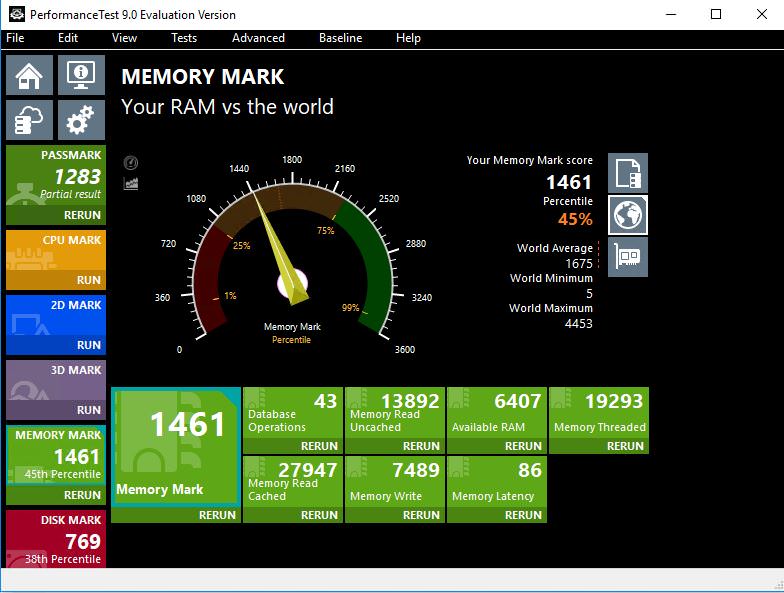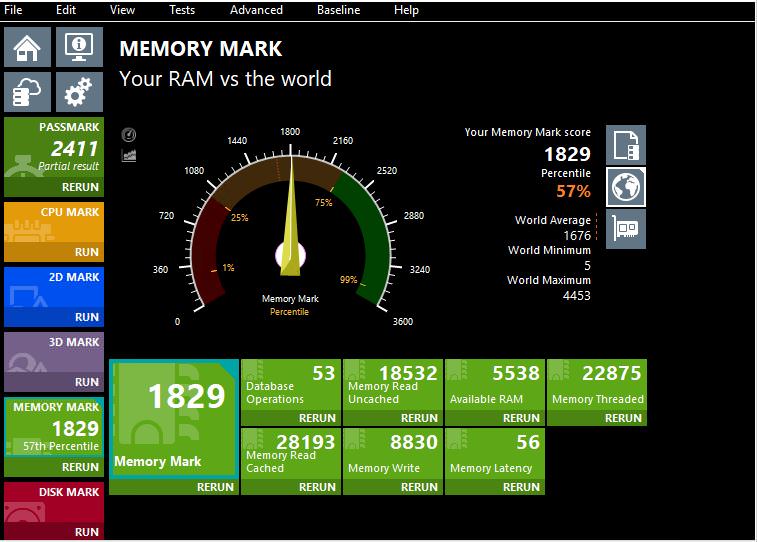Hi guys
I decided to retire my trusty i7-2600 after a good few years of loyal service and treat myself to something a bit faster.
After reading what's available within the budget, I opted for a Ryzen 5 2600 system.
Must say, was rather disappointed when I put everything together and realised the new system feels a lot worse than the old one.
It's that sinking feeling when your freshly installed Windows 10 takes an entire minute to get to the desktop... and then that tiny infuriating lag between a click and whatever happens next.
After running a few benchmarks, I sort-of identified the bottlenecks - and they seem to point to the mobo chipset issues.
SATA interface problem:
I wasn't going to upset my old rig util I'm sure the new one is 100% operational, so I put in a spare 1TB drive (and the old HD 6850, since no integrated GPU).
The HD has sequential read of 110 MB/s and sequential write of 100 MB/s.
That very same disk had around 150 MB/s read and 100 MB/s write on another machine (didn't write down exactly, but that's the ballpark).
RAM issues:
RAM benchmark shows 14000 read (uncached), 7500 write and 86ms latency.
I cannot test the RAM in another machine, but my ancient DDR3 RAM has 12000 read, 8000 write and 28ms latency.
Would the first results not be considered bad for DDR4 (especially the latency)? It's a single channel though - but surely that shouldn't make that much difference?
Should I overclock it? How high before it breaks?
Things I tried:
1. Flushed the BIOS. Well, since the one I had was already latest, that did nothing.
2. Downloaded and installed all the latest drivers from MSI site.
3. Downloaded and installed all the latest drivers from AMD site.
4. Tried another hard drive, installed Windows and all - same thing.
5. Replaced the SATA cable.
6. Tried the drive in another SATA port.
7. Tried the RAM in the other slot.
8. Forced "AMD SATA Controller" instead of "Standard SATA AHCI Controller" in Device Manager (that made it even worse)
Anyone any ideas what I should try (tossing the mobo is also an option )?
)?
System at the moment:
Board: B350M PRO VD PLUS | BIOS: E7B38AMS.290 (2018/04/27)
VGA: Club 3D Radeon HD 6850 | PSU: Gigabyte GP-P560B (650W, 80 PLUS bronze)
CPU: AMD Ryzen 5 2600 | MEM: 1x 8GB (Kingston KVR26N19S8/8; 9905702-007.A00G; 2666 CL 19)
HDD: 1TB, Toshiba | COOLER: Stock
OC: None at the mo | OS: Windows 10 64bit Professional
Bios -

Memory bench -

Disk bench -

I decided to retire my trusty i7-2600 after a good few years of loyal service and treat myself to something a bit faster.
After reading what's available within the budget, I opted for a Ryzen 5 2600 system.
Must say, was rather disappointed when I put everything together and realised the new system feels a lot worse than the old one.
It's that sinking feeling when your freshly installed Windows 10 takes an entire minute to get to the desktop... and then that tiny infuriating lag between a click and whatever happens next.
After running a few benchmarks, I sort-of identified the bottlenecks - and they seem to point to the mobo chipset issues.
SATA interface problem:
I wasn't going to upset my old rig util I'm sure the new one is 100% operational, so I put in a spare 1TB drive (and the old HD 6850, since no integrated GPU).
The HD has sequential read of 110 MB/s and sequential write of 100 MB/s.
That very same disk had around 150 MB/s read and 100 MB/s write on another machine (didn't write down exactly, but that's the ballpark).
RAM issues:
RAM benchmark shows 14000 read (uncached), 7500 write and 86ms latency.
I cannot test the RAM in another machine, but my ancient DDR3 RAM has 12000 read, 8000 write and 28ms latency.
Would the first results not be considered bad for DDR4 (especially the latency)? It's a single channel though - but surely that shouldn't make that much difference?
Should I overclock it? How high before it breaks?
Things I tried:
1. Flushed the BIOS. Well, since the one I had was already latest, that did nothing.
2. Downloaded and installed all the latest drivers from MSI site.
3. Downloaded and installed all the latest drivers from AMD site.
4. Tried another hard drive, installed Windows and all - same thing.
5. Replaced the SATA cable.
6. Tried the drive in another SATA port.
7. Tried the RAM in the other slot.
8. Forced "AMD SATA Controller" instead of "Standard SATA AHCI Controller" in Device Manager (that made it even worse)
Anyone any ideas what I should try (tossing the mobo is also an option
System at the moment:
Board: B350M PRO VD PLUS | BIOS: E7B38AMS.290 (2018/04/27)
VGA: Club 3D Radeon HD 6850 | PSU: Gigabyte GP-P560B (650W, 80 PLUS bronze)
CPU: AMD Ryzen 5 2600 | MEM: 1x 8GB (Kingston KVR26N19S8/8; 9905702-007.A00G; 2666 CL 19)
HDD: 1TB, Toshiba | COOLER: Stock
OC: None at the mo | OS: Windows 10 64bit Professional
Bios -

Memory bench -

Disk bench -

Last edited:








